Yardlong Bean Growing Guide: Your Path to a Bountiful Harvest
Have you ever dreamed of harvesting your own incredibly long, vibrant yardlong beans, bursting with fresh flavor? Then you’ve come to the right place! This Yardlong Bean Growing Guide is your complete, step-by-step resource to cultivating these delicious and versatile legumes right in your own backyard. Forget expensive grocery store produce – I’m going to show you how easy it is to grow your own abundance.
For centuries, yardlong beans have been a staple in Asian cuisine, prized not only for their unique length (some varieties reach an impressive three feet!) but also for their tender texture and subtly sweet taste. From stir-fries to salads, these beans are incredibly versatile, adding a delightful crunch and nutritious boost to countless dishes. But growing them doesn’t require a degree in horticulture; in fact, with a few simple tricks and techniques, even beginner gardeners can achieve a prolific harvest.
Why should you bother with this Yardlong Bean Growing Guide? Because nothing beats the taste of homegrown vegetables! There’s a profound satisfaction in nurturing a plant from seed to harvest, and the flavor of yardlong beans grown with your own two hands is simply unparalleled. Plus, you’ll be reducing your carbon footprint by sourcing your food locally and avoiding the pesticides and preservatives often found in commercially grown produce. This guide will equip you with the knowledge and confidence to cultivate your own delicious and healthy yardlong beans, transforming your garden into a vibrant and productive space.
Let’s get started on your journey to a bountiful harvest with this comprehensive Yardlong Bean Growing Guide!
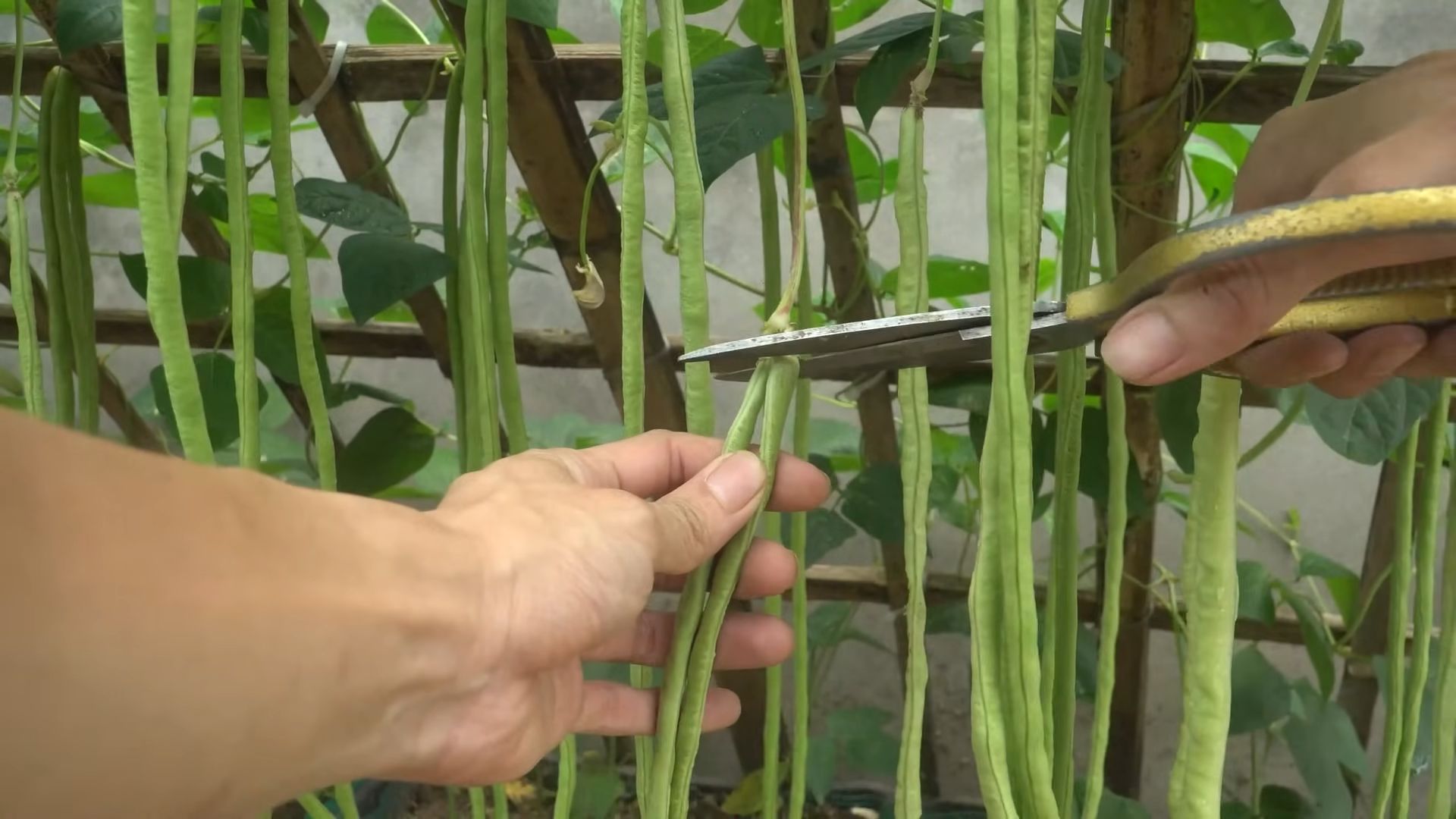
My Epic Yardlong Bean Growing Adventure: A Complete Guide
I’ve always loved yardlong beans – those incredibly long, slender pods bursting with flavor. So, I decided to grow my own! It was more rewarding than I ever imagined, and I’m here to share my journey with you. This guide will walk you through everything from seed starting to harvesting, ensuring a bountiful crop in your own backyard.
Phase 1: Planning and Preparation
- Choose the right location: Yardlong beans need at least six hours of direct sunlight daily. Select a sunny spot in your garden with well-drained soil. Poor drainage can lead to root rot, a common problem for these plants.
- Prepare the soil: Yardlong beans thrive in fertile, loose soil. Amend your soil with compost or well-rotted manure to improve its structure and nutrient content. A soil test can help determine if you need to add any specific nutrients.
- Decide on your growing method: You can grow yardlong beans directly from seed outdoors, or start them indoors a few weeks before the last expected frost. Starting indoors gives them a head start, especially in cooler climates. I prefer starting indoors, it gives me more control over the process.
- Gather your supplies: You’ll need seeds (choose a variety you like!), seed starting mix (if starting indoors), gardening gloves, a trowel or hand cultivator, watering can, and possibly some plant supports (more on this later).
Phase 2: Starting Your Yardlong Bean Plants
Starting Seeds Indoors (Optional but Recommended)
- Fill seed starting trays: Fill your seed starting trays or small pots with a seed starting mix. Don’t use garden soil, as it’s too dense for delicate seedlings.
- Sow the seeds: Plant your yardlong bean seeds about an inch deep and about two inches apart. Gently firm the soil around the seeds.
- Water gently: Water the seeds thoroughly, but avoid overwatering, which can lead to damping off (a fungal disease). Use a gentle spray or watering can with a rose head.
- Provide warmth and light: Place the trays in a warm location (around 70-75°F) with plenty of sunlight. You may need to supplement with grow lights, especially if it’s cloudy or you don’t have a very sunny spot indoors.
- Thin seedlings: Once the seedlings have developed their first true leaves (the leaves after the cotyledons), thin them out to one strong seedling per pot or cell. This gives each plant enough space to grow.
- Harden off seedlings: Before transplanting outdoors, gradually acclimate your seedlings to the outdoor environment. This process, called hardening off, reduces transplant shock. Start by placing them outdoors for a few hours each day, gradually increasing the time over several days.
Direct Sowing Outdoors
- Wait for warm soil: Direct sowing works best when the soil temperature is consistently above 60°F (15°C). This usually happens after the last frost.
- Prepare the soil: Loosen the soil and remove any weeds or rocks. Make sure the soil is moist but not soggy.
- Plant the seeds: Plant the seeds about an inch deep and two inches apart in rows about 18-24 inches apart. This spacing allows for good air circulation and prevents overcrowding.
- Water thoroughly: Water the seeds gently after planting to help them settle into the soil.
Phase 3: Caring for Your Yardlong Bean Plants
- Watering: Water regularly, especially during dry periods. Aim for consistently moist soil, but avoid overwatering, which can lead to root rot. Water deeply and less frequently rather than shallowly and often.
- Fertilizing: While yardlong beans aren’t heavy feeders, a balanced fertilizer can boost their growth and yield. Apply a slow-release fertilizer at planting time or use a liquid fertilizer every few weeks according to package directions.
- Weed control: Regularly remove weeds around your plants to prevent competition for water and nutrients. Mulching can help suppress weeds and retain soil moisture.
- Pest and disease control: Monitor your plants for pests and diseases. Common pests include aphids and bean beetles. Use appropriate organic pest control methods if necessary. Good air circulation helps prevent fungal diseases.
- Providing support: Yardlong beans are vining plants and need support to grow properly. You can use stakes, trellises, or even netting to support the vines. This prevents the pods from touching the ground and becoming susceptible to rot or pests.
Phase 4: Harvesting Your Delicious Yardlong Beans
- Harvesting time: Harvest yardlong beans when the pods are young, tender, and bright green. The pods should be firm but not woody. The best time to harvest is usually 50-70 days after planting, depending on the variety.
- Harvesting method: Snap off the pods with your fingers or use sharp pruning shears. Harvest regularly to encourage continued production. Don’t let the pods get too large or they will become tough and stringy.
- Enjoy your harvest: Yardlong beans are delicious eaten fresh, steamed, stir-fried, or added to soups and salads. You can also freeze them for later use.
Tips for Success:
- Choose the right variety: Select a yardlong bean variety that is suitable for your climate and growing season.
- Rotate your crops: Avoid planting yardlong beans in the same spot year after year to prevent the buildup of pests and diseases.
- Observe your plants: Regularly check your plants for signs of stress, pests, or diseases. Early detection is key to successful pest and disease management.
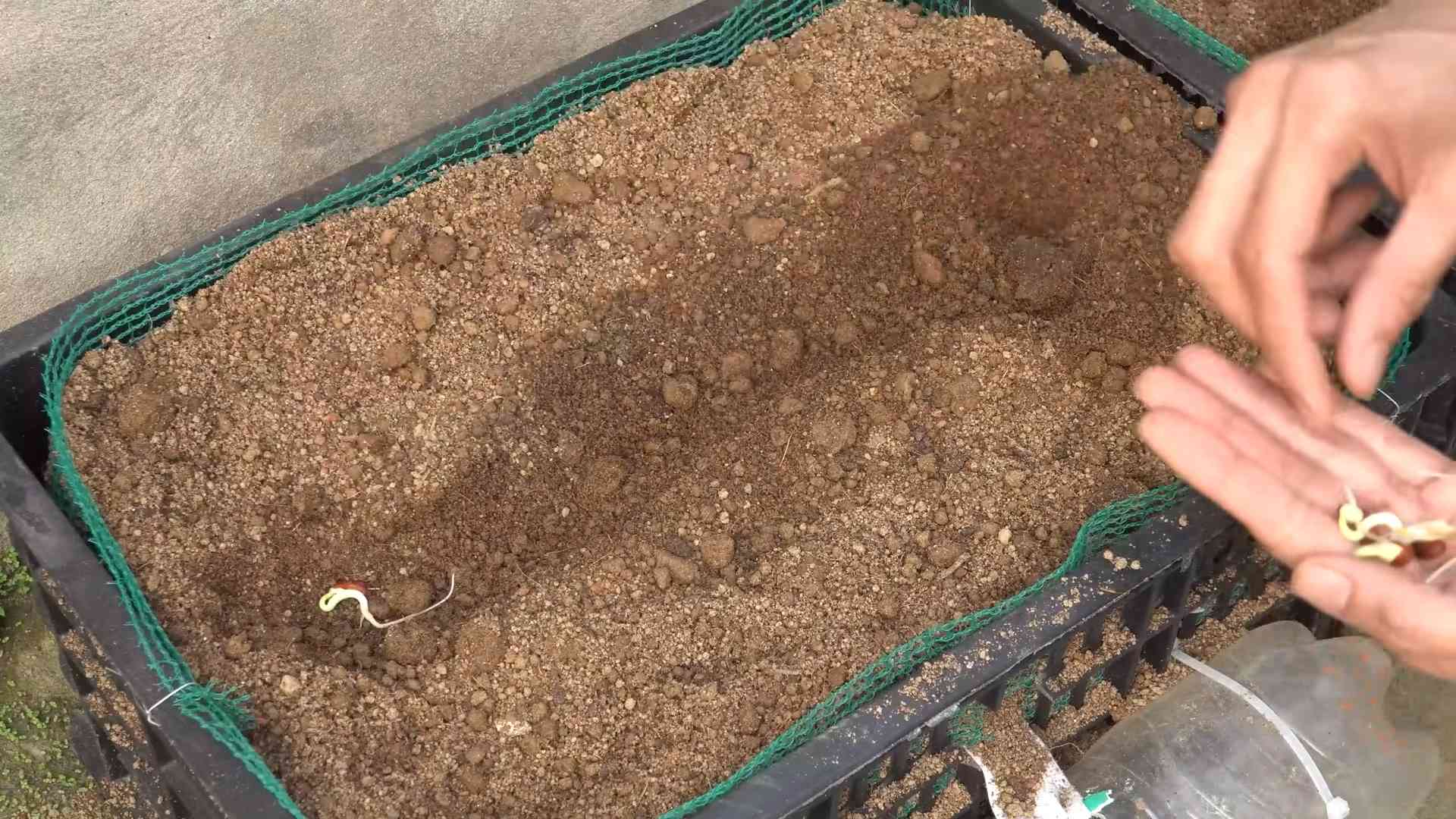
Conclusion
So there you have it – your comprehensive guide to successfully growing your own yardlong beans! This DIY approach to cultivating these delicious and versatile beans offers a rewarding experience that goes beyond simply harvesting food. It connects you directly with the growing process, allowing you to appreciate the journey from seed to plate. The satisfaction of biting into a freshly picked yardlong bean, knowing you nurtured it from a tiny seed, is unparalleled. This method, focusing on simple techniques and readily available resources, makes growing yardlong beans accessible to everyone, regardless of experience level. It’s a fantastic way to introduce children to the wonders of gardening and instill a love for fresh, healthy produce. The minimal investment in time and resources is far outweighed by the abundance of delicious, homegrown yardlong beans you’ll enjoy throughout the growing season. Beyond the taste, you’ll also be contributing to a more sustainable lifestyle by reducing your reliance on commercially grown produce. This DIY yardlong bean growing guide empowers you to take control of your food source and experience the joy of home gardening. Don’t just read about it – try it!
We encourage you to experiment with different varieties of yardlong beans, exploring the diverse colors and flavors available. Consider companion planting with herbs like basil or marigolds to deter pests and improve soil health. You can also try different growing methods, such as vertical gardening or using raised beds, to optimize space and yield. For those with limited space, container gardening is a viable option. Remember to adjust your watering and fertilizing schedule based on your local climate and the specific needs of your plants. The key is to observe your plants closely and adapt your techniques as needed. Share your experiences, successes, and even your challenges – we’d love to hear from you! Post pictures of your bountiful harvest on social media and tag us – let’s build a community of passionate yardlong bean growers! Let this guide be your springboard to a rewarding and delicious gardening adventure. Embrace the simplicity, enjoy the process, and savor the fruits (or rather, the beans!) of your labor. Happy gardening!
Frequently Asked Questions
What type of soil is best for growing yardlong beans?
Yardlong beans thrive in well-drained, fertile soil with a slightly acidic to neutral pH (6.0-7.0). Amend heavy clay soils with compost or other organic matter to improve drainage and aeration. Sandy soils may benefit from the addition of organic matter to retain moisture. A soil test can help determine your soil’s pH and nutrient levels, allowing you to make necessary adjustments. Remember, good soil is the foundation for healthy plant growth.
How much sunlight do yardlong beans need?
Yardlong beans are sun-loving plants and require at least six to eight hours of direct sunlight per day. Choose a location in your garden that receives ample sunlight throughout the day. Insufficient sunlight can lead to poor growth, reduced yields, and increased susceptibility to diseases. Observe your plants – if they appear leggy or pale, they may not be receiving enough sunlight.
When is the best time to plant yardlong beans?
The ideal time to plant yardlong beans is after the last frost and when soil temperatures have warmed to at least 60°F (15°C). This typically falls in spring or early summer, depending on your geographic location. Check your local frost dates to determine the appropriate planting time for your area. Planting too early can expose seedlings to frost damage, while planting too late may result in a shorter growing season and reduced yield.
How often should I water my yardlong beans?
Consistent watering is crucial for healthy yardlong bean growth. Aim to keep the soil consistently moist but not waterlogged. Water deeply and less frequently rather than shallowly and often. The frequency of watering will depend on your local climate, soil type, and weather conditions. During hot, dry periods, you may need to water more frequently. Observe the soil moisture level – if the top inch or two feels dry, it’s time to water. Mulching around the plants can help retain soil moisture and reduce the frequency of watering.
What are some common pests and diseases that affect yardlong beans?
Yardlong beans can be susceptible to various pests and diseases, including aphids, bean beetles, and fungal diseases like anthracnose and downy mildew. Regularly inspect your plants for signs of infestation or disease. Implementing preventative measures, such as crop rotation, companion planting, and maintaining good garden hygiene, can help minimize pest and disease problems. If you notice an infestation or disease, take appropriate action, such as using organic pest control methods or applying a suitable fungicide. Early detection and prompt treatment are key to preventing significant damage.
Can I grow yardlong beans in containers?
Yes, you can successfully grow yardlong beans in containers, making them a great option for gardeners with limited space. Choose large containers (at least 12 inches deep) with adequate drainage holes. Use a well-draining potting mix and ensure the containers receive ample sunlight. Regular watering and fertilization will be essential for healthy growth in containers. Consider using a trellis or support system to help the vines climb and maximize space utilization.
How do I harvest yardlong beans?
Harvest yardlong beans when they are young and tender, typically when they are 12-18 inches long. Harvesting regularly encourages continued production. Snap the beans off the vine using a sharp knife or your fingers. Avoid harvesting beans that are too mature, as they will be tough and stringy. Enjoy your fresh, homegrown yardlong beans immediately or store them in the refrigerator for a few days. Remember, consistent harvesting is key to maximizing your yield and maintaining the quality of your beans. This DIY approach to growing yardlong beans is truly rewarding.

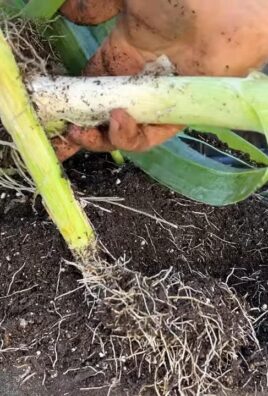
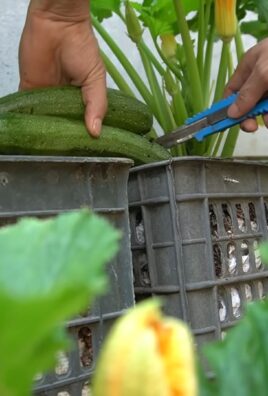
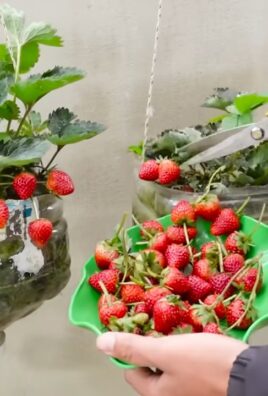
Leave a Comment